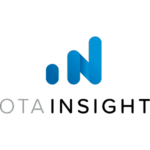
In the realm of business, the quest for true inspiration often leads us through a labyrinth of complex theories and practices. One such enlightening concept is Simon Sinek’s “The Golden Circle,” a simple yet profound model for impactful leadership and innovation.
This model, grounded in the core questions of “Why,” “How,” and “What,” can be brilliantly applied to the nuanced field of revenue management in the hospitality industry, making it accessible and inspirational even to those unfamiliar with its intricacies.
It will also clear up the 1000s of myth out there about “the geeks who speak”, “the number crunchers”, “the: what do you actually do”, “ah, those that move the rates up and down” all the way to “not sure what they actually do”.
Understanding the Golden Circle
At its heart, The Golden Circle framework starts with the “Why” — the purpose, cause, or belief that inspires an organization to do what it does. From there, it moves outward to the “How” — the specific actions taken to realize the “Why.” Finally, it encompasses the “What” — the products or services a company offers to the world.
This model isn’t just a communication strategy but a way of thinking that puts purpose at the forefront of business practice.
The why: the purpose of Revenue Management
Forget about the Price, Promotion, People blabla for the moment:
In the context of revenue management, the “Why” is fundamentally about maximizing profitability while fostering customer loyalty and satisfaction, a critical balance that sustains long-term business growth.
Hotels, airlines, and other service providers aim to use price as a tool not merely to increase short-term gains but to ensure long-term sustainability and growth by giving exceptional customer service.
One cannot live without the other. It’s like a marriage: Price and Customer Satisfaction go through good and bad times together.
The How: strategies in Revenue Management
Moving to the “How,” this involves the strategies and techniques used to achieve effective revenue management. Dynamic pricing, predictive analytics, and market segmentation are just a few of the tools employed.
For example, a regional hotel might use historical data and predictive analytics to adjust room prices dynamically, ensuring optimal occupancy rates and maximizing revenue per available room. This strategic pricing helps meet financial goals without compromising service quality.
The What: the tangible outcomes
Finally, the “What” in revenue management is the visible outcome of these efforts — perhaps a pricing structure that fluctuates based on demand, promotions targeting specific customer segments, or loyalty programs designed to retain high-value clients.
A real-life example outside of hospitality is Apple’s product ecosystem. Apple sells computers and phones — that’s the “What.” But it does so by innovating user-friendly designs that integrate seamlessly with one another, driven by its “Why” — to challenge the status quo and empower individual creativity.
Drawing parallels: inspiration through purpose
What makes The Golden Circle particularly relevant to revenue management is its emphasis on starting with “Why.”
In a field often bogged down by complex data and transactional relationships, reconnecting with the “Why” can be truly transformative. It inspires not just the revenue managers but also the entire organization, fostering a culture where every decision supports the ultimate purpose of customer satisfaction and sustainable profitability.
Fabi’s Pro tip: Next revenue meeting ask: Why on earth are we doing all of this?
Consider a small boutique hotel chain that uses its unique storytelling and local cultural integration to attract guests.
Their “Why” could be to provide an authentic local experience, which informs their pricing strategies, special offers, and services, making sure they align with the expectations and desires of their target audience.
Fabi’s Pro tip: A price without context is useless!
The Aha moment
For someone new to revenue management, understanding that it’s not just about numbers and algorithms but about fulfilling a purpose can be an eye-opening realization and maybe just what revenue management needs.
Revenue management, when viewed through the lens of The Golden Circle, is about more than just profits; it’s about creating value for customers and ensuring the longevity of the business.
By harnessing the power of “Why,” revenue managers and businesses can inspire loyalty, innovate solutions, and drive sustainable growth. It turns the technical complexities of revenue management into a compelling narrative that resonates with everyone, from stakeholders to the front-line staff, ultimately leading to an organization that thrives both financially and culturally.
Conclusion
In conclusion, like the compelling vision of Simon Sinek’s Golden Circle, effective revenue management is driven by a clear sense of purpose. It’s about understanding not just how to optimize prices and manage inventory, but why these actions matter in a larger context — a context that includes genuine customer satisfaction and enduring business success.
This is the inspirational aha moment: realizing that at its core, revenue management is not about price points but about purpose and people.































